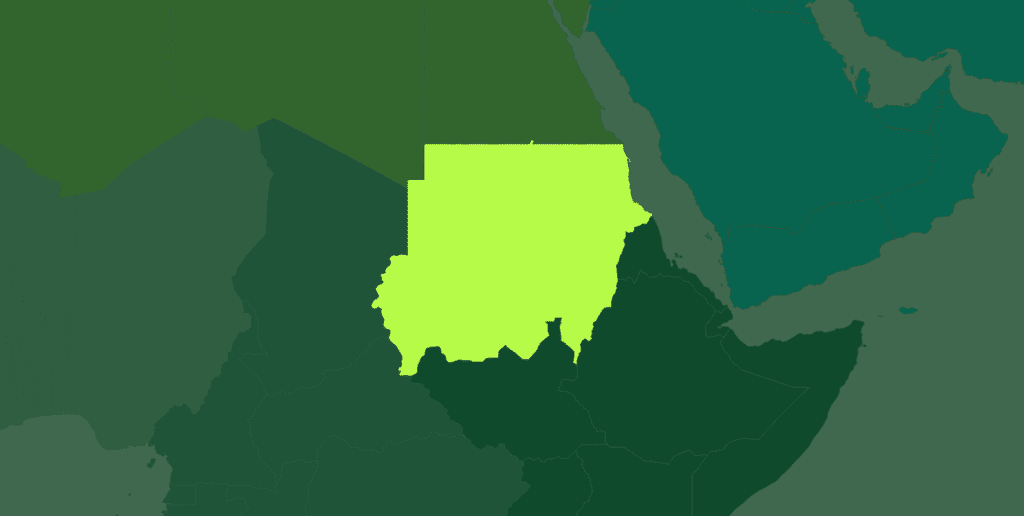Profile
Beja of the deserts of eastern Sudan and arid mountains of the Red Sea Hills are among the country’s longest established peoples, having been resident for over 4,000 years. They number approximately 2.2 million and extend into Egypt and Eritrea. They inhabit large areas of Sudan between the Egyptian border, Eritrea and the River Setit, and from the Red Sea coast to the River Atbara and the Nile.
Historical context
Beja have traditionally followed a nomadic way of life, mostly as camel herders. Colonial economic ventures attracted various groups from outside the region when mechanized farming was introduced in the 1940s.
Most significantly, as a result of the construction of the Aswan Dam from 1964–7, some Nubian inhabitants of Wadi Haifa were resettled in the south-western part of Beja land, increasing population concentration and putting pressure on scarce land resources. The Aswan Dam inundated important pastures for the Bisharin, a sub-group of the Beja, causing increasing impoverishment.
Beja were especially hit by drought in the 1970s and therefore shifted their livelihood from camel rearing to breeding smaller animals and working in Port Sudan as dockers and other labourers. Further devastating droughts of the 1980s caused major depopulation of the Beja herds with losses estimated at 80 per cent of their animal wealth.
The area available for Beja livestock was rapidly diminishing as the development of plantation schemes robbed them of their grazing reserves. The expansion of mechanized farming further south has caused a gradual decrease in humidity which has affected the vegetation.
The destruction of the animal wealth of the Beja has brought about increasing urbanization to which there now appears to be no alternative. The National Islamic Front (NIF) coup in 1989 brought no positive changes; on the contrary, the NIF was alarmed by the Beja’s pride in their culture and traditions, including the practice of Sufi Islam, which the NIF considered incompatible with Arab-Islamic identity. Beja support for Sudan’s second largest party, the Democratic Unionist Party, also raised NIF ire.
In the early 1990s the government apportioned the most fertile Beja land along the Gash River among outside loyalists, adding to Beja grievances. In 1995 the Beja Congress, which had been formed in the mid-1960s, began to embrace military resistance and received help from Eritrea. The goal was seeking redress for those grievances and not secession.
The Beja Congress formed part of the Asmara-based National Democratic Alliance (NDA) of all Sudanese opposition parties, which maintained an armed wing. In the late 1990s, the Sudanese army attacked Beja mosques and schools in a bid to displace Sufi Islam with Khartoum’s interpretation of Sunni Islam.
Although the Beja joined the NDA’s eastern front in the rebellion against Khartoum, the Sudanese military was able to contain it. The Beja formally relied on the SPLA to represent its interests at the negotiating table from 2002–5, although the NDA was excluded from the north–south talks and Sudan’s other conflicts – including that with the Beja – were largely ignored.
In January 2005, Sudanese forces killed over 20 people and arrested over 150 members of the Beja Congress in crushing a Beja demonstration in Port Sudan. One of the protestors’ grievances was the exclusion of the east from the CPA. In March 2005, the Beja Congress joined a smaller rebel group of the Bedouin Rashaida people who also held many grievances against Khartoum.
Together, as NDA hold-overs, the Beja Congress and Rashaida Free Lions formed the ‘Eastern Front’. The rebels launched an offensive against the coastal town of Tokar in June 2005 and skirmishes continued into 2006.
In June 2006, Eritrea hosted talks, backed by Kuwait that resulted in a ceasefire agreement between the government and the Eastern Front. The negotiations culminated in a peace agreement in October. The Eastern Sudan Peace Agreement (ESPA) is modelled largely on the CPA, with wealth and power-sharing provisions, as well as ceasefire modalities.
However, there were concerns about the exclusion of smaller groups from the agreement. Since the peace process was mainly driven by the Beja, the inclusion of smaller groups into the peace process, and women within these groups, remained a challenge. Tensions remained high in the region through 2015, with the Beja Congress threatening to take up arms once again against the government.
Current issues
Overall, the east remains one of the poorest areas of Sudan, with illiteracy rates running between 50 and 90 per cent. Local leaders have long expressed their concerns that the government deliberately neglected the east and its mainly non-Arabic-speaking people through a shortage of public services, lack of schools and health care, and a dismal job market.
Most Beja now live in shantytowns outside the urban centres, having lost their traditional livelihoods after severe droughts in the 1980s killed off their cattle. Before representation was regulated through the ESPA, Beja representation in government was scarce.
While the Beja are the largest group affected, it is important to note that other ethnic groups based in the region also suffered from exclusion – possibly more so because they lack a united voice.
Updated June 2018
Source link : https://minorityrights.org/communities/beja/
Author :
Publish date : 2024-01-23 16:45:16
Copyright for syndicated content belongs to the linked Source.
